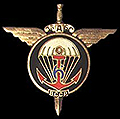Digger70
Posts: 23
Joined: 6/12/2007
Status: offline

|
Coralsaw,
It depends what you define ZoC for, like I stated it is only used for supply and retreats, NOT movement, traditonal ZOC rules force a unit to stop moving the moment it enters an enemy ZOC and will not allow them to move from one ZOC hex to another. These go back to tabletop wargame days in the 70's and 80's
So in the traditonal sense the rulebook is correct, most people would view an enemy ZoC as a means to limit movement, which is clearly not the case in the CS. At the same time the rulebook does fail to mention the fact that in terms of retreats and supply it is utilised.
Now whether this was a design intention or not I cannot comment, but the reality is that units will never retreat adjacent to an enemy unit, unless the hex is already occupied by friendlies. If they are required to do so they will take an additional strength point loss or reduction and remain where they are. I have seen many times when units actually retreat towards you and then stop 2 hexes away and evaporate with repeated reduction results. This is an undeniable fact of gameplay. The only way this could happen is if enemy units exert a ZOC.
The same goes for Isolation and supply, If you surround a unit on directly opposing sides with only two other units in adjacent hexes, leaving 4 hexes unoccupied. The Unit will be declared isolated. Again whether this is a design intention or not, the fact is that the only way this can happen is if the two enemy units exert ZOC over those hexes. Otherwise you would have to completely surround a unit in all six hexes to cut off its supply or make it isolated.
The Rulebook is just not clear on this. The rulebook gives a good general overview, but the detailed mechanics are left to experience.
Matt ~Digger
< Message edited by Digger70 -- 6/29/2007 4:49:40 AM >
|
 Printable Version
Printable Version











 New Messages
New Messages No New Messages
No New Messages Hot Topic w/ New Messages
Hot Topic w/ New Messages Hot Topic w/o New Messages
Hot Topic w/o New Messages Locked w/ New Messages
Locked w/ New Messages Locked w/o New Messages
Locked w/o New Messages Post New Thread
Post New Thread